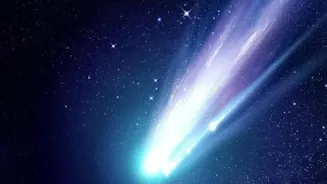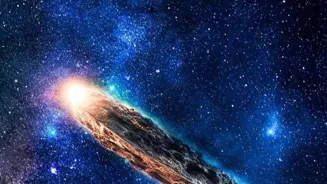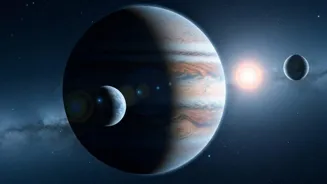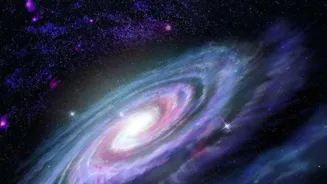Unveiling the Secrets of Comets: Time Capsules of Our Solar System's Past. Dive into the cosmic mysteries!
In the vast expanse of the cosmos, comets are like icy wanderers, celestial snowballs harboring
clues to the very origin and evolution of our solar system. These cosmic travelers, often described as dirty snowballs, are composed of ice, dust, rock, and frozen gases.
For long time, they were seen as bad omen, foretelling disasters. But now, scientists are seeing them as time capsules, offering a window into the early days of our planetary home.
By studying these cosmic relics, we can better understand how the solar system formed, how planets got their water and organic molecules, and perhaps even the origins of life itself. It's like digging up a treasure of information written in the language of ice and dust, waiting to be deciphered.
Comets from icy regions near Neptune create stunning celestial displays
Comets primarily reside in two main regions: the Kuiper Belt, a disk-shaped zone beyond Neptune's orbit, and the Oort Cloud, a hypothetical spherical cloud much farther out, almost halfway to the nearest star.
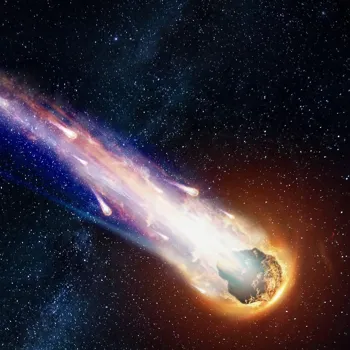
These are like the solar system's freezer, where comets remain largely unchanged for billions of years. When a comet is nudged out of its icy home—perhaps by a gravitational interaction with another object, or star's passage—it begins its long journey towards our Sun.
As it approaches the Sun, the heat causes the ice to sublimate (turn directly into gas), releasing dust and gas to form a bright coma (atmosphere) and a tail that can stretch for millions of kilometres. This celestial display is what makes comets so visible and awe-inspiring from Earth.
Comets hold vital data on organic molecules and water for life on Earth
The composition of comets is a treasure trove of data for scientists. Spectroscopic analysis, which involves studying the light emitted by comets, reveals the presence of various elements and molecules, including water ice, carbon monoxide, methane, ammonia, and even complex organic molecules.
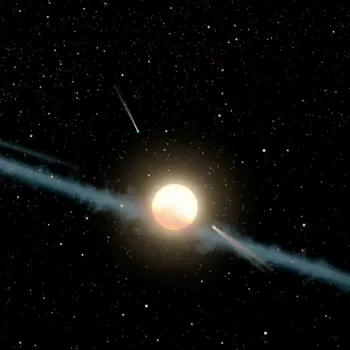
These organic molecules are the building blocks of life, and their presence in comets suggests that these icy bodies could have played a crucial role in delivering the ingredients for life to Earth.
The water in comets also has a distinct isotopic signature, which can be compared to that of water found on Earth to determine whether comets could have contributed to our planet's oceans.
Space missions to comets unveil dark, organic-rich surfaces and amino acids, hinting at life origins
Space missions to comets have provided invaluable insights. The European Space Agency's Rosetta mission, with its Philae lander, gave us a close-up look at Comet 67P/Churyumov–Gerasimenko. The mission revealed that the comet's surface is surprisingly dark and rich in organic molecules.
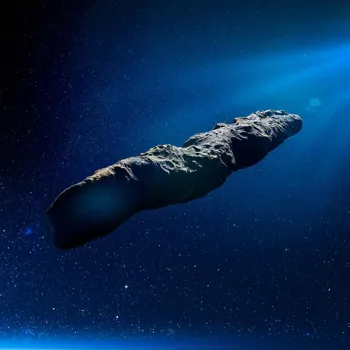
It also detected the presence of glycine, an amino acid, further strengthening the link between comets and the origin of life. NASA's Stardust mission collected dust samples from Comet Wild 2 and returned them to Earth for analysis.
These samples contained minerals that formed in the high-temperature inner solar system, suggesting that materials were transported outwards during the solar system's early stages.
Studying comets reveals solar system formation and Earth's origins
Studying comets helps us understand the formation and evolution of the solar system in several ways. Firstly, the composition of comets represents the building blocks from which the planets formed.
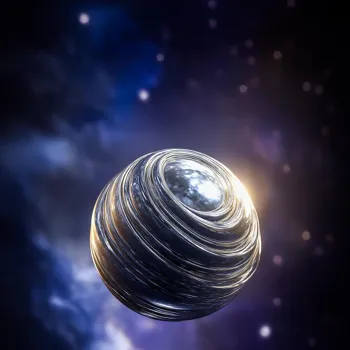
By analyzing the elements and molecules in comets, we can infer the conditions that prevailed in the early solar nebula, the cloud of gas and dust that gave birth to our planetary system.
Secondly, comets may have delivered water and organic molecules to the early Earth, providing the raw materials for life. This is known as the "late heavy bombardment" theory.
Analyzing the isotopic composition of water in comets and comparing it to that of Earth's oceans helps us test this hypothesis.
Future comet missions and advanced telescopes to reveal mysteries
Future comet missions and advanced telescopes will further unravel the mysteries of these icy wanderers. Proposed missions include sending spacecraft to even more distant comets in the Kuiper Belt and Oort Cloud, and developing more sophisticated instruments for analyzing cometary composition.
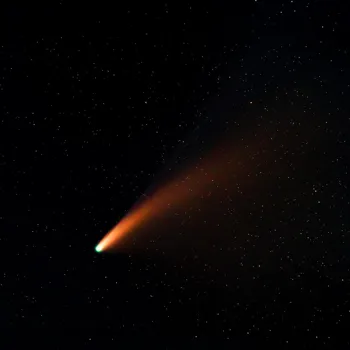
Ground-based telescopes, like the Extremely Large Telescope (ELT) and space-based telescopes like the James Webb Space Telescope (JWST), will also play crucial roles in studying comets.
By combining data from multiple sources, scientists hope to gain a comprehensive understanding of comets and their role in shaping our solar system and the potential for life beyond Earth.
AI Generated Content. Glance/InMobi shall have no liability for the content